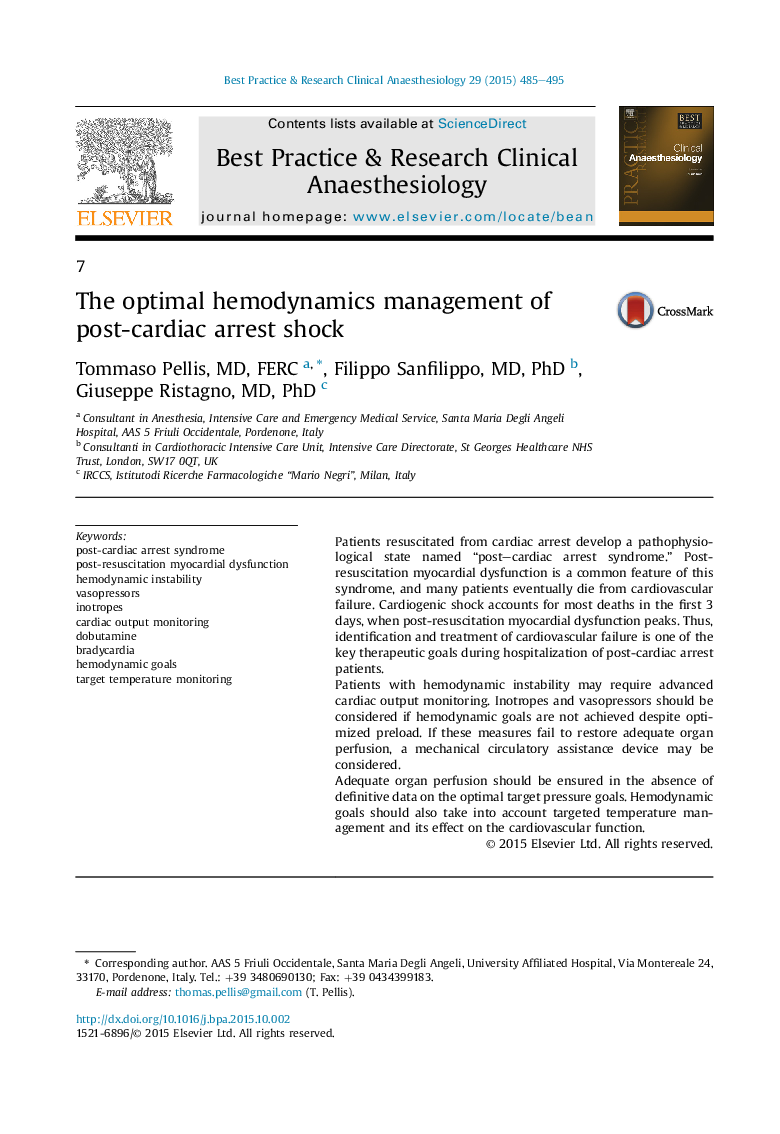| کد مقاله | کد نشریه | سال انتشار | مقاله انگلیسی | نسخه تمام متن |
|---|---|---|---|---|
| 2748346 | 1149183 | 2015 | 11 صفحه PDF | دانلود رایگان |
Patients resuscitated from cardiac arrest develop a pathophysiological state named “post–cardiac arrest syndrome.” Post-resuscitation myocardial dysfunction is a common feature of this syndrome, and many patients eventually die from cardiovascular failure. Cardiogenic shock accounts for most deaths in the first 3 days, when post-resuscitation myocardial dysfunction peaks. Thus, identification and treatment of cardiovascular failure is one of the key therapeutic goals during hospitalization of post-cardiac arrest patients.Patients with hemodynamic instability may require advanced cardiac output monitoring. Inotropes and vasopressors should be considered if hemodynamic goals are not achieved despite optimized preload. If these measures fail to restore adequate organ perfusion, a mechanical circulatory assistance device may be considered.Adequate organ perfusion should be ensured in the absence of definitive data on the optimal target pressure goals. Hemodynamic goals should also take into account targeted temperature management and its effect on the cardiovascular function.
Journal: Best Practice & Research Clinical Anaesthesiology - Volume 29, Issue 4, December 2015, Pages 485–495
